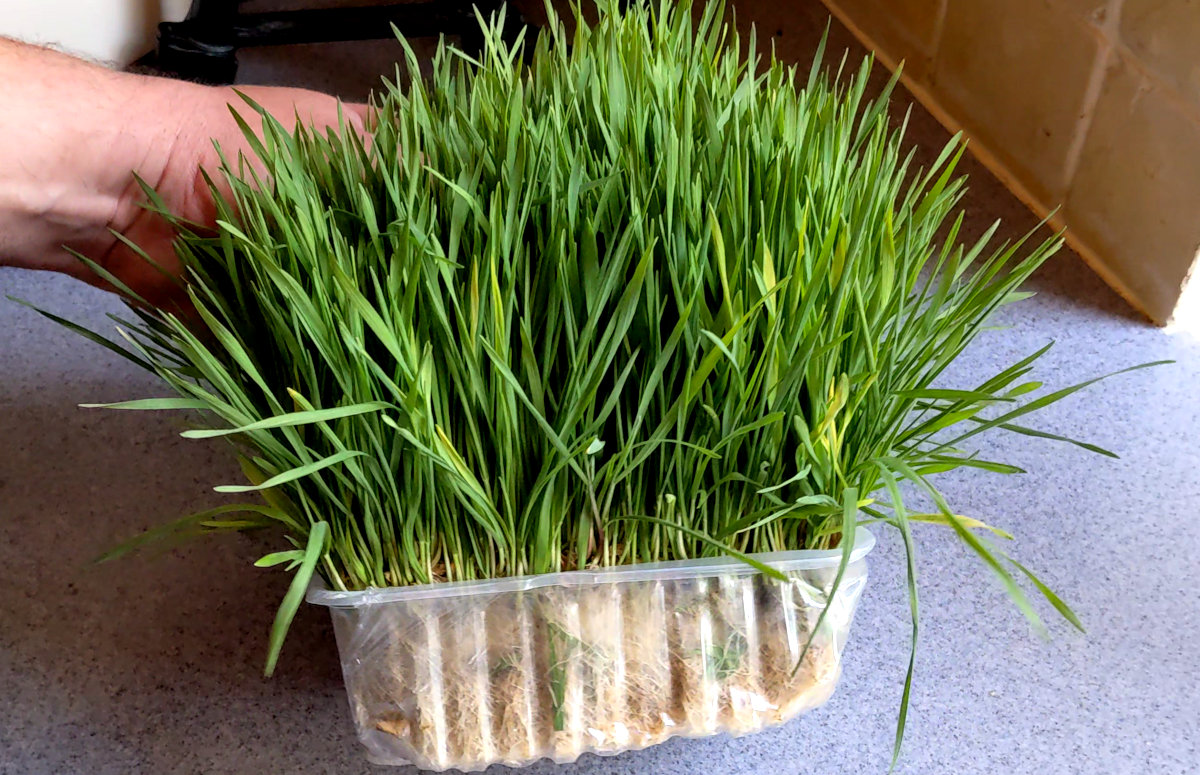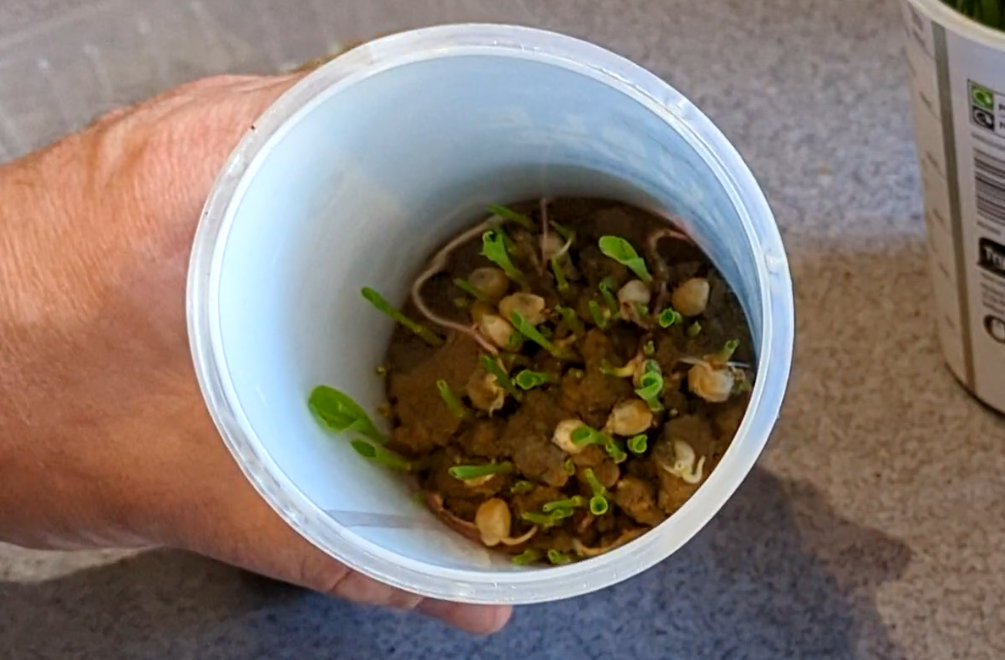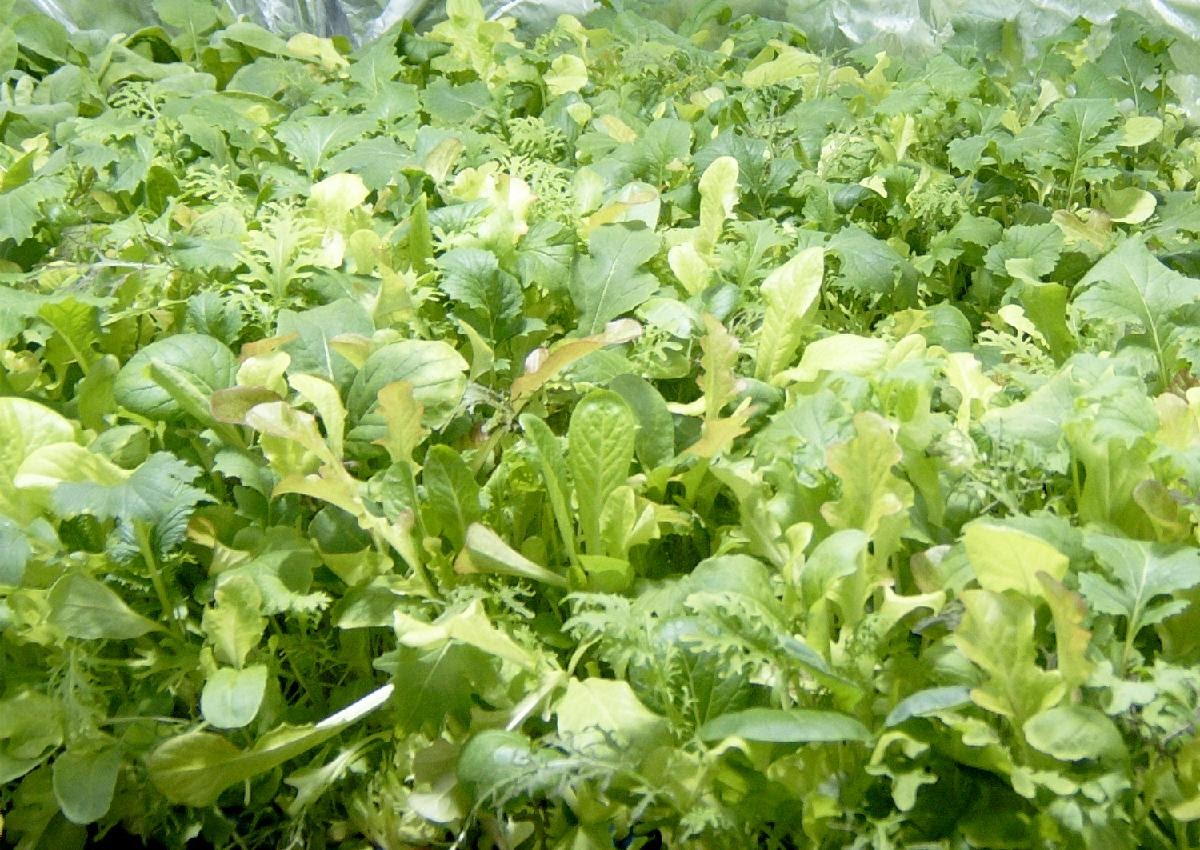Fodder for chickens, 14 seeds tested and how to grow it with almost no costs.

I grow fodder for my chickens during winter and to keep them in fresh greens during bird flu lock downs.
Table of Contents
- What is fodder?
- Why feed fodder to chickens?
- What fodder is best for chickens?
- Step by step guide to growing fodder for chickens:
- How much fodder does a chicken need per day?
- Cost and growing time of fodder seeds and grains:
- The advantages and disadvantages of growing fodder for chickens:
- Can you feed chickens just fodder?
Chicken fodder, also known as sprouted green feed, offers numerous benefits for your flock. By incorporating fresh, live greens into their diet, you provide your chickens with a rich source of vitamins, minerals, and enzymes.
The sprouting process increases the nutrient content and digestibility of the grains, making them a valuable supplement to their regular feed. Not only does it promote optimal health and egg production, but it can also help reduce feed costs, especially during winter months when fresh forage may be scarce.
What is fodder?
Fodder is any agricultural foodstuff used specifically to feed domesticated livestock, such as cattle, rabbits, sheep, horses, chickens and pigs. "Fodder" refers particularly to food given to the animals, rather than that which they forage for themselves.
The difference between fodder and sprouts is the length of time they are allowed to grow for. Sprouts are fed within a day or so of the first shoots appearing while with fodder the sprouts are allowed to grow on for as much as a week or 10 days to maximise the green growth before feeding.
Below: Oat fodder from our recent tests.

Although the definition of fodder includes hay, straw, silage, compressed and pelleted feeds, oils and mixed rations, and sprouted grains and legumes when it comes to chickens we will be looking at growing seeds to produce fresh greens to supplement the diet.
Fodder is something you have to grow yourself at home in a DIY setup, it can not be bought at the store.
Why feed fodder to chickens?
Fodder can be grown on land that is not suitable for other crops. Fodder can be grown on land that is not suitable for other crops, such as steep slopes or poor soils. It can also be grown during the winter months, when other crops are not available. This gives you an advantage if you are short on space.
Chicken fodder is a powerhouse of nutrition for your flock. The sprouting process activates enzymes that break down complex nutrients into more digestible forms. This increased bio-availability ensures that your chickens receive optimal nutrition from the fodder, leading to improved overall health and vitality.
By utilising grains and seeds, which are often more affordable in bulk, you can significantly reduce your feed expenses. Additionally, growing chicken fodder allows you to take advantage of seasonal variations and local availability, further cutting down costs in the long run.
The live greens in chicken fodder provide a natural boost to your flock's immune system. The vitamins, minerals, and antioxidants present in the sprouts help strengthen their overall health, making them more resistant to diseases and infections. By incorporating chicken fodder into their diet, you actively contribute to their well-being and longevity.
Growing chicken fodder aligns with sustainable farming practices. By reducing reliance on commercially produced feed, which often involves extensive transportation and packaging, you minimise your carbon footprint. Additionally, the use of organic and untreated grains promotes a healthier environment for both your chickens and the surrounding ecosystem.
What fodder is best for chickens?
I tested 14 different seeds and grains for growing fodder and some work much better than others.
My personal preference is barley, wheat and canola seeds to grow fodder. They are cheap, can be bought in bulk and are easy to grow all year round.
Below: Canola is one of my favourite seeds to grow into fodder.

When choosing seeds for fodder growing it is important to consider the climate in your area and the nutritional needs of your chickens.
Below: Because it is cold where I live, sweetcorn and rye do not germinate reliably.

Step by step guide to growing fodder for chickens:
Here is a video showing you how I grow fodder for my chickens and the result of the seed testing.
To begin growing chicken fodder, it's essential to select the right grains suitable for sprouting. Several grains work well for this purpose, including wheat, barley, oats, and corn.
Look for whole, untreated grains without any chemical coatings, as they will yield the best results. Organic options are preferable to ensure a pesticide-free environment for your chickens.
Step 1: Soaking the grains: Measure the desired amount of grains based on the size of your flock. It's recommended to start with a small batch until you become more experienced.
Rinse the grains thoroughly under cool water to remove any debris and place in a container and cover them with water. Allow them to soak for approximately 12-24 hours, ensuring they are fully submerged.
Step 2: Draining and Rinsing: After the soaking period, drain the water from the grains using a fine-mesh sieve or colander. Rinse the grains with fresh water to wash away any residual starch or impurities.
Step 3: Sprouting: Return the rinsed grains to the container and cover them with a damp cloth or breathable lid. This allows air circulation while preventing excessive drying.
Place the container in a warm, well-ventilated area, away from direct sunlight. A temperature range of 65-75°F (18-24°C) is ideal for sprouting. Rinse the grains twice daily, ensuring they remain moist but not waterlogged.
Step 4: Growing on: This is the growth phase when you allow the green shoots to grow on. My preferred method is to use a thin layer of sand in a tray and sprinkle the seed evenly across the tray and then add another thin layer of sand over the seeds.
Dampen and place on a light window sill. all to grow on for a few days and keep a little damp.
Below: All fodder needs to be grown on to maximise the green shoots.

Step 5: Feeding your flock: Once the sprouts have reached the desired length, it's time to feed them to your chickens.
Below: Provide the fodder to your flock in a shallow feeding dish or scatter them in their designated feeding area.
Observe your chickens' response to the new feed and monitor their consumption. Adjust the amount accordingly to prevent waste or overfeeding.
Here are some additional tips for growing fodder for chickens:
- Start with a small amount of seeds and gradually increase the amount as your chickens get used to eating fodder.
- Maintain proper hygiene throughout the process by washing hands, utensils, and containers thoroughly.
- Experiment with different grains and seed mixes to provide variety and diverse nutritional profiles for your flock.
- Regularly monitor the sprouts for any signs of discoloration, foul odours, or mould. If any issues arise, discard the batch and start anew.
- Keep the fodder moist but not wet.
- Harvest the fodder when it is about 4 inches tall.
- Consider using a rotation system to ensure a continuous supply of fresh chicken fodder.
- Store the fodder in a cool, dry place for up to two days.
How much fodder does a chicken need per day?
The amount of fodder a chicken needs per day will vary depending on the size of the chicken, the breed of the chicken, and the climate in which the chicken lives.
As a general rule of thumb, a chicken will need about 2-3% of its body weight in fodder per day. So, a 5-pound chicken would need between 1/4 (30 grams) to 1/3 cup(40 grams) of fodder per day.
It is important to note that fodder is not a complete diet for chickens.
If you are considering feeding your chickens fodder, it is important to do your research and talk to your local veterinarian to make sure that it is the right choice for your chickens.
Cost and growing time of fodder seeds and grains:
The most commonly used seeds to grow fodder for chickens, how long it takes for he fodder to be ready and the cost of purchase:
| Seed | Growing time | Cost per pound | Notes |
|---|---|---|---|
| Barley | 7 to 10 days | $0.50 / £0.40 | Easy to grow and it has a high nutritional value. |
| Alfalfa | 15 to 30 days | $1.00 / £0.80 | Alfalfa is a legume that is high in protein and fibre. |
| Millet | 7 to 14 days | $0.75 / £0.50 | Good amount of green tops produced. |
| Oats | 8 to 14 days | $0.60 / £0.40 | Good source of energy and they are also easy to grow. |
| Wheat | 7 to 10 days | $0.80 / £0.60 | Wheat is readily available and it is also easy to grow. |
| Rye | 10 to 14 days | $0.90 / £0.65 | Rye is hardy and it can be grown in a variety of climates. |
| Rye grass | 14 to 21 days | $0.95 / £0.75 | Can be grown outdoors. |
| Buckwheat | 10 to 14 days | $1.25 / £1.00 | Buckwheat is a good source of protein and fibre. |
| Peas | 10 to 21 days | $1.10 / £0.90 | Peas are a good source of protein and they are also easy to grow. |
| Clover | 15 to 30 days | $1.05 / £0.90 | Clover is a legume that is high in protein and fibre. |
| Sorghum | 7 to 14 days | $1.30 / £1.00 | Sorghum is a good source of carbohydrates and it can be grown in a variety of climates. |
| Lettuce, spinach or chard. | 21 to 40 days | $2.10 / £1.65 | Slow to produce |
| Sweetcorn | 8 to 14 days | $1.00 / £0.80 | Needs a warmer climate |
| Rice | 10 to 16 days | $1.00 / £0.80 | Must be warm to grow reliably. |
Please note that these prices are just estimates and may vary depending on your location and the supplier ad the quantity you are buying.
The advantages and disadvantages of growing fodder for chickens:
Advantages:
- Fodder is a high-quality, nutritious food for chickens.
- It can be grown in a small space, such as a backyard garden.
- It is a relatively inexpensive way to feed chickens.
- It can help to reduce food waste.
- It can help to improve the health of chickens.
Disadvantages:
- Fodder can be time-consuming to grow.
- Growing fodder requires some equipment and capital outlay.
- It can be difficult to control pests and diseases.
- It can be difficult to store fodder for long periods of time.
- Fodder may not be suitable for all chickens.
Overall, growing fodder for chickens can be a rewarding experience. It is a healthy and nutritious way to feed your chickens, and it can help to save you money. However, it is important to weigh the advantages and disadvantages before deciding if growing fodder is right for you.
Can you feed chickens just fodder?
Fodder can not replace chicken feed and you should not feed chickens just fodder. Fodder is a good source of nutrients, but it is not a complete diet.
Chickens also need a source of grit, minerals, and vitamins. You can provide these nutrients by feeding your chickens a commercial chicken feed or by feeding them a variety of other foods, such as fruits, vegetables, and insects.
- Fodder is not a complete diet and does not provide all the nutrients that chickens need.
- Fodder can be low in protein and fat, which can lead to weight loss and malnutrition.
- Fodder can be high in fibre, which can cause digestive problems.
- Fodder can be contaminated with bacteria and parasites, which can make chickens sick.
- If you are looking for a way to feed your chickens a healthy and nutritious diet, it is best to feed them a commercial chicken feed that has been formulated to meet their nutritional needs.
